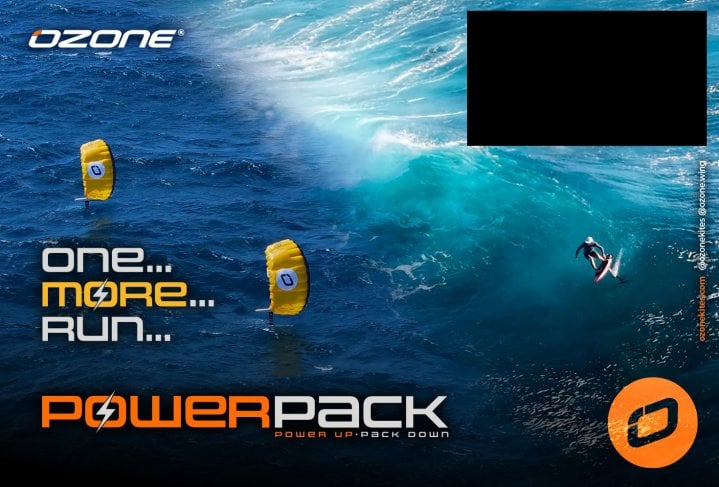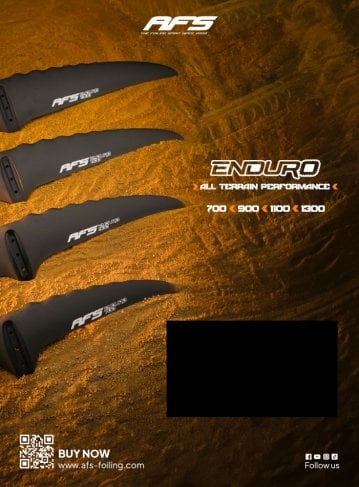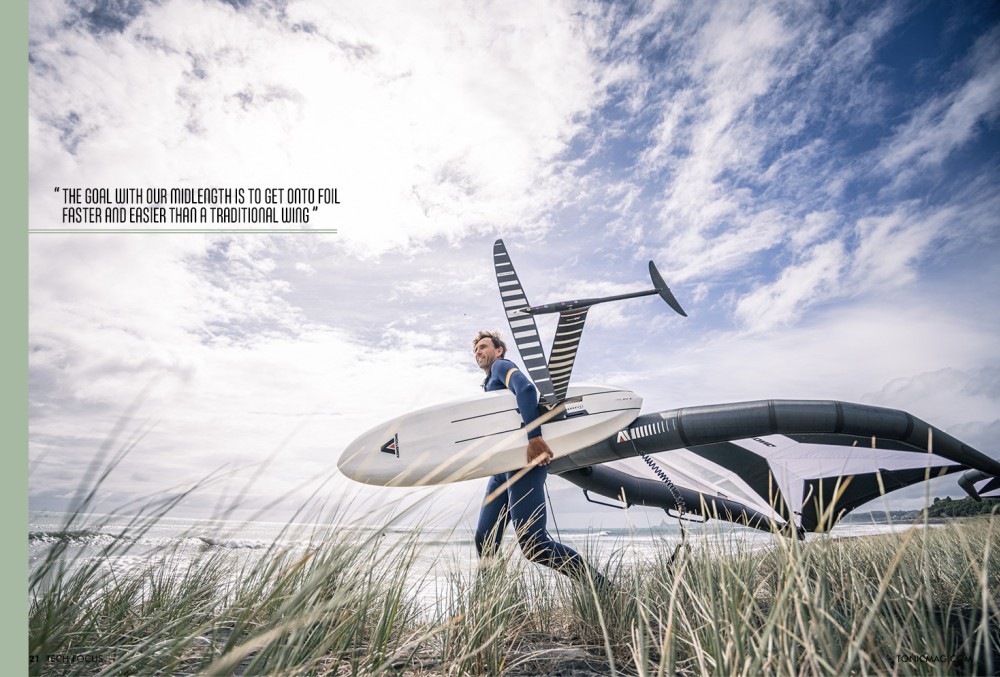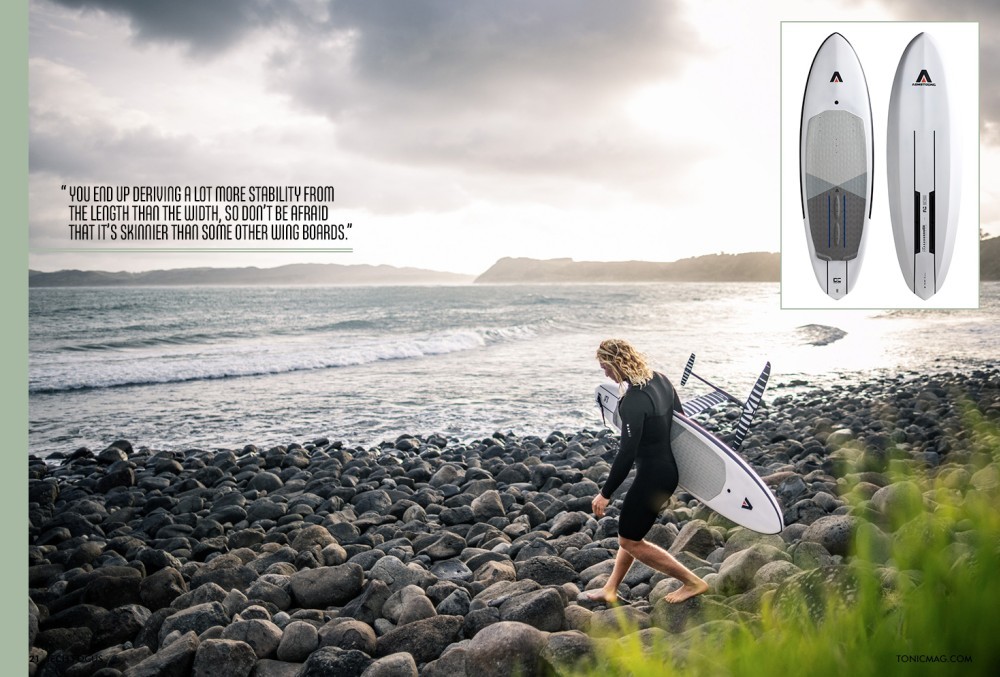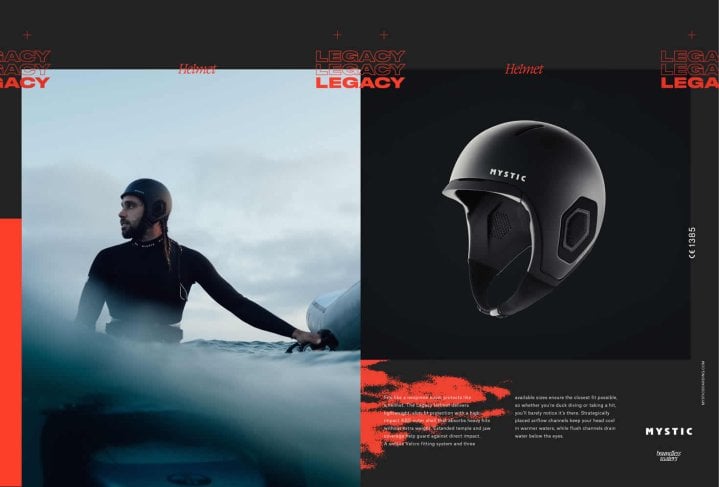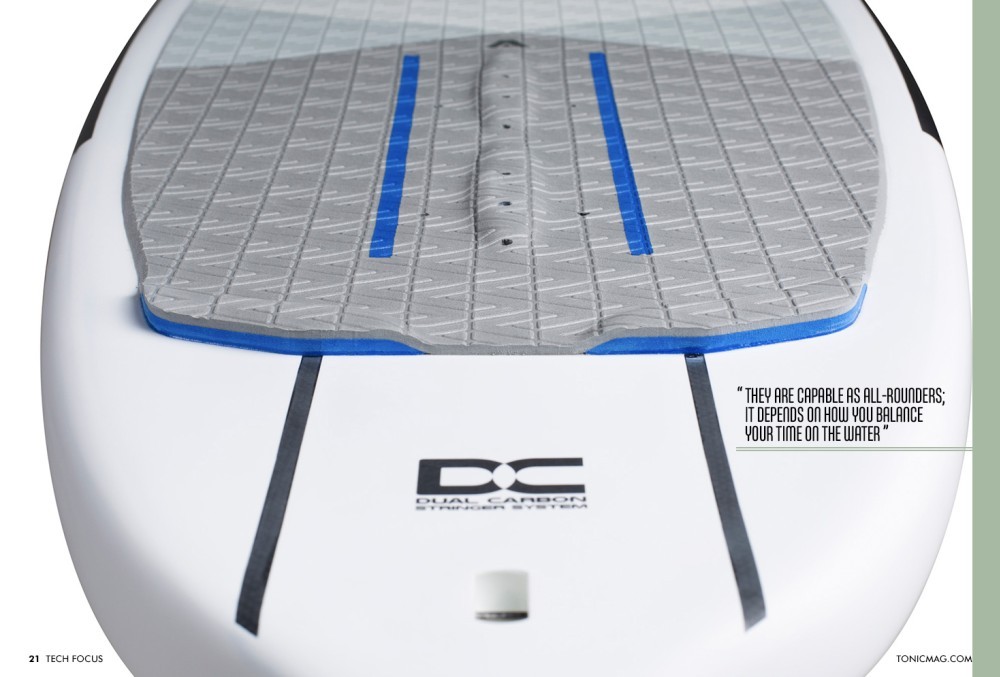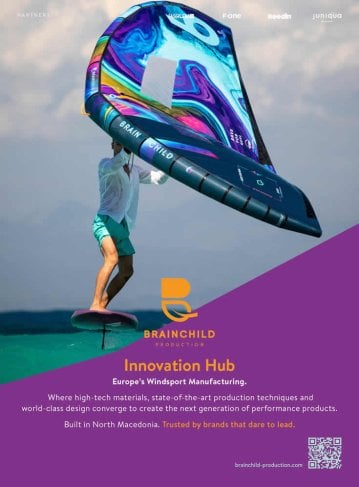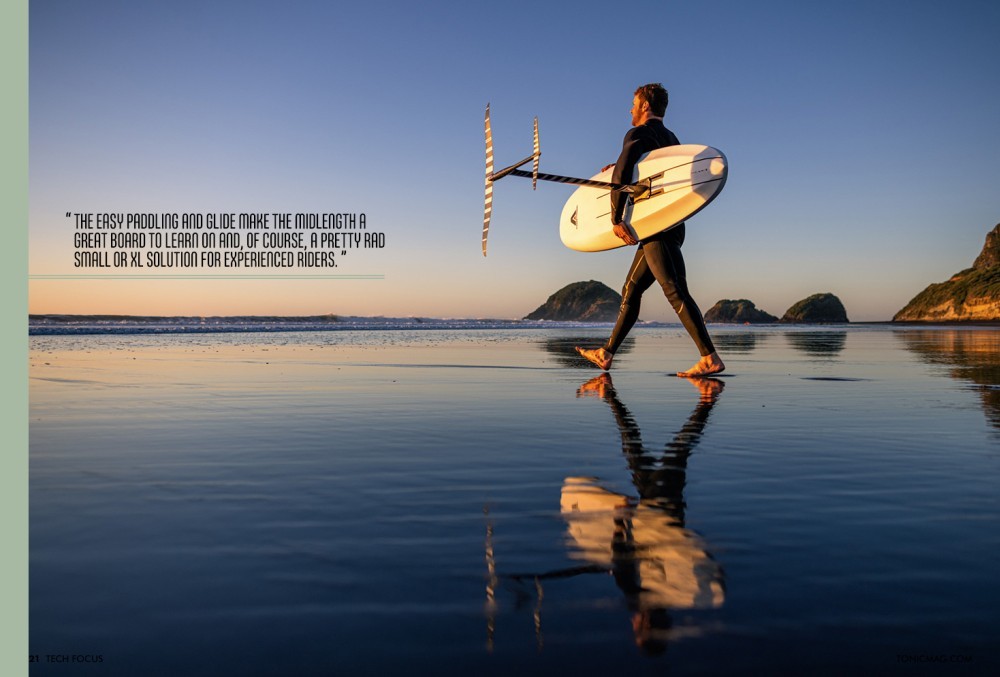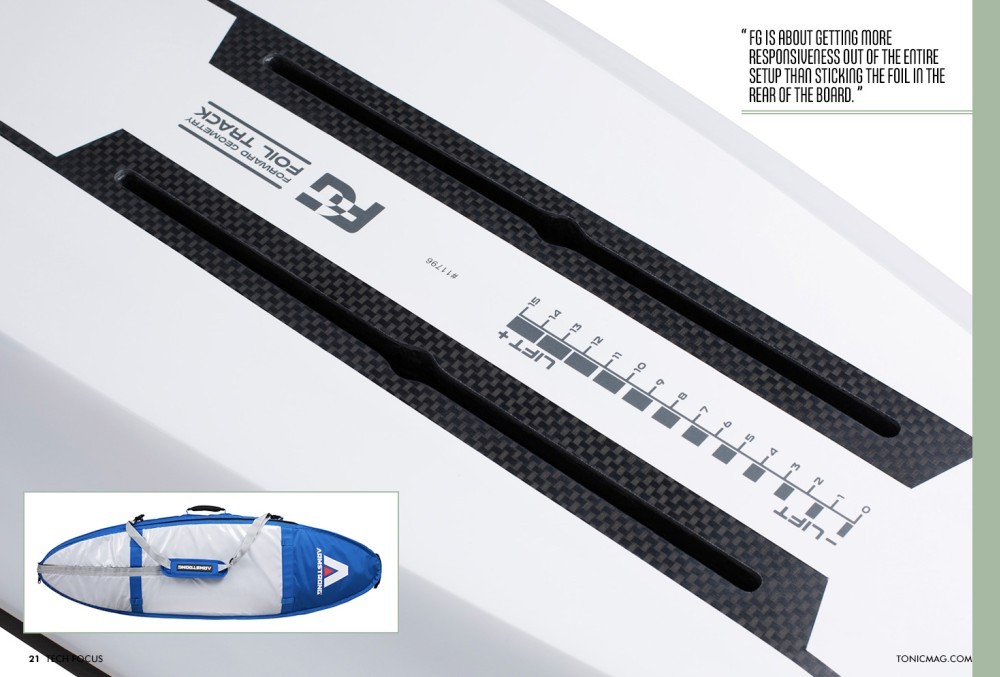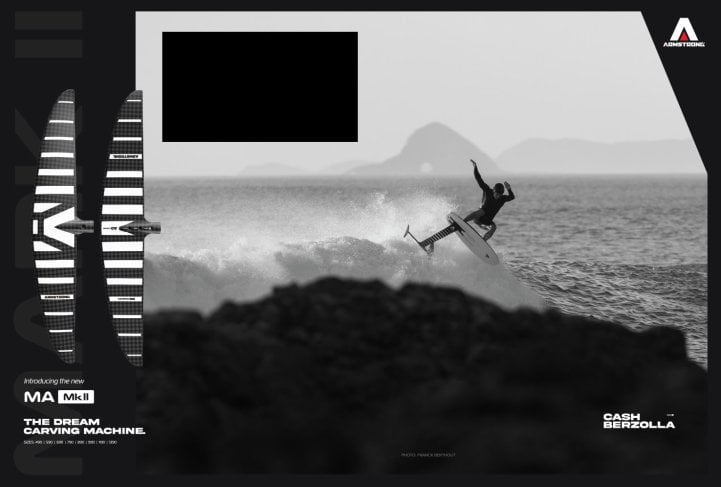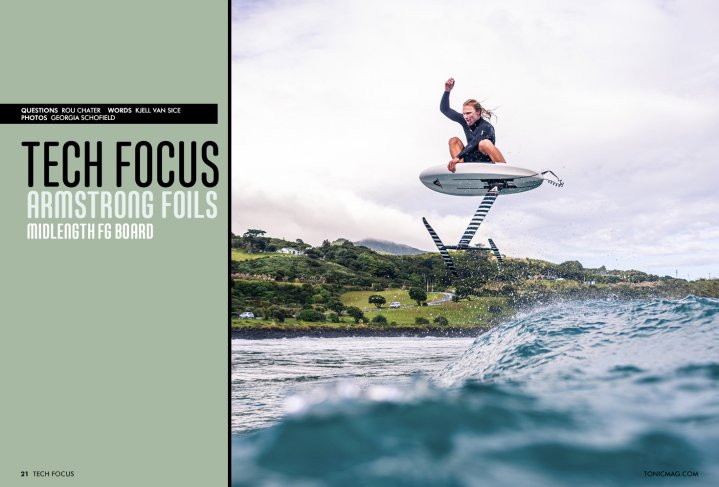
Tech Focus: Armstrong Foils Midlength FG Board
Issue 21 / Tue 20th Aug, 2024
The surf world has been buzzing with the "Midlength" craze, but Armstrong Foils is taking it to new heights. In this Tech Focus, Rou Chater and Kjell van Sice dive into the inspiration behind Armstrong's Midlength range—combining the glide of a downwind foilboard with the versatility of a traditional surfboard. Whether you're wing foiling or prone surfing, this board might redefine your ride. Let's get into it!
The “Midlength” craze has been ripping through surfing for a few years. Was inspiration drawn from there, or was it the goal to scale down a DW board for winging or has the idea come from somewhere else?
Both. The Armstrong Midlength embodies a traditional midlength surfboard's fun and versatile soul but benefits from the teachings of a downwind foilboard shape. The goal with our Midlength is to get onto foil faster and easier than a traditional wing or prone surf foilboard but vastly improve the manoeuvrability over a downwind foilboard. It’s a true best of both worlds result.
As we see more and more of these boards hit the market, who should consider buying one?
Three types of riders benefit from the Midlength. First, wing foilers keen on improving their low-end range will see massive gains from jumping on a Midlength, which has more glide than a traditional wing board yet is still highly responsive and relatively stable to stand on. Prone surf foilers in either small or large surf will also see opportunity with that high paddling speed and the narrow width, which allows you to take off way earlier and still absolutely rip once on foil. Lastly, the one-board quiver rider (possibly without heaps of space in the car for a longer downwind board) will benefit from this versatile performance in all conditions, from light to strong wind and big to small waves.
If you want to see a great example of the Midlength’s versatility, watch The Home of Armstrong Tour on YouTube. You won’t regret it. - ADD VIDEO
What advantages do they offer to wing foilers over a DW board?
Mainly, it’s more compact and responsive while still getting excellent glide for easy takeoffs. Unless you’re pushing ultra-light winds where length and max glide is key, a Midlength of appropriate volume will get you pretty far in light winds. And they have footstrap inserts if that’s your thing.
And for prone foilers, what are the main benefits?
That glide to manoeuvrability ratio. Think of it as a step-up or gun foilboard. It works great in micro or XL waves where you need to get in early or carry heaps of speed. Then, the narrow width keeps things really manoeuvrable once you start cranking turns.
What are the drawbacks of a design like this? The range seems pretty narrow. How stable are they for weekend warriors?
Riders are surprised by just how stable the Midlength is for its given volume. You end up deriving a lot more stability from the length than the width, so don’t be afraid that it’s skinnier than some other wing boards. If you’re keen on only freestyle or advanced surf winging, then go for a Wing FG foilboard that’s a winging specialist. The same goes for prone surfing; if you can ride a 20-something-litre prone board and it works for you, then go for it. If you want a little bit of everything and an easier time getting (and staying) on foil, the Midlength might be the thing for you.
Do these boards make the DW boards obsolete for the wing foil community? Many wingers jumped onto that craze early…
At this point in wing and foil technology, downwind boards still have a place in ultra-light winging – the sub-5kts type. The larger Midlengths can get you reasonably close to this level of performance, though. Realistically, “light wind” for most of us is 10-15kts; in this case, a Midlengths, larger foil, and larger wing will do the job beautifully and be fun once you’re on foil. Oh, it’s way easier to transport than a full-blown downwind board.
Your range starts at 45l and stops at 85l, with five sizes in total. Will bigger sizes be coming? 85l isn’t a lot for a heavy-weight winger in light winds.
38L and 100L sizes are coming here very soon (likely by the time you read this!), which pushes the envelope in both directions. That’ll take the Midlength to seven sizes: 38L, 45L, 55L, 65L, 75L, 85L, and 100L.
Are these light wind boards for winging, or do they have more use as an all-rounder? Similarly, for prone, do these negate the need for a dedicated prone board?
They are capable as all-rounders; it depends on how you balance your time on the water. You could go for a 100L for light wind days, but it wouldn’t be your first choice for prone surf foiling. Conversely, you could get a 38L for prone surf foiling, which wouldn’t do much good on a light wind day. It's just a question of how you expect to balance your time. Again, the shape and dims work really nicely for both.
Picking myself an example, I balance my time between winging, prone surf, and downwind. At 160lbs (72kg), the 55L Midlength paired with different front foils and hand wing sizes covers virtually everything for me, from 12kts to 30kts and small to head-high surf. I’ve even prone downwinded it. Admittedly, I rarely reach for my other boards except for my DWP 98L when paddling. That 55L just feels fantastic and lets me ride the smaller foils I want to be on. Love it.
How hard are they to ride? What level do you need to be at as a winger and a prone foiler to get the most out of them?
It all depends on volume, but frankly, a beginner-intermediate-ish winger on a larger mid-length would be well catered to. As for prone, the easy paddling and glide make the Midlength a great board to learn on and, of course, a pretty rad small or XL solution for experienced riders.
What construction techniques did you use?
Like all Armstrong boards, the Midlength is built around an ultra-stiff double-skin carbon PVC sandwich. This combines with the i-beam top-to-bottom dual stringers for maximum structural rigidity and durability. Our proprietary carbon fibre foil tracks are keyed directly into the stringer fibres for a fully integrated build. The mid-length also sports footstrap inserts if you’re inclined to ride strapped.
Are your forward geometry tracks compatible with other foils, or do you recommend running the Armstrong A+ system with these boards?
The Forward Geometry system is compatible with everything. More than anything, FG is about getting more responsiveness out of the entire setup than sticking the foil in the rear of the board. The boxes in the mid-length are in an absolute Goldilocks position, making the board feel incredibly balanced and responsive when flying.
We love the look and got to feel one at a recent demo. It has a really interesting shape and is lightweight, too. We can’t wait to get one in the water soon! Thanks for your time!
I love it. Jack’s got his mid-length review in the works; I'm looking forward to that. Thanks, team!
Videos
By Rou Chater
Rou Chater has been kitesurfing for over twenty years, paddleboarding for the last six years, and was there testing the first wingsurfer from Naish in Tarifa when it arrived on the continent. He is passionate about riding waves and exploring new places. As the publishing editor, he oversees everything at Tonic but also our sister magazines IKSURFMAG and IMB. He's been on the water since he was born and has never looked back, in the winter you'll find him chasing swells in the Caribbean and during the summer he can be found all over Europe at various SUP, Kitesurf and Mountain Bike events getting features for the magazines.


